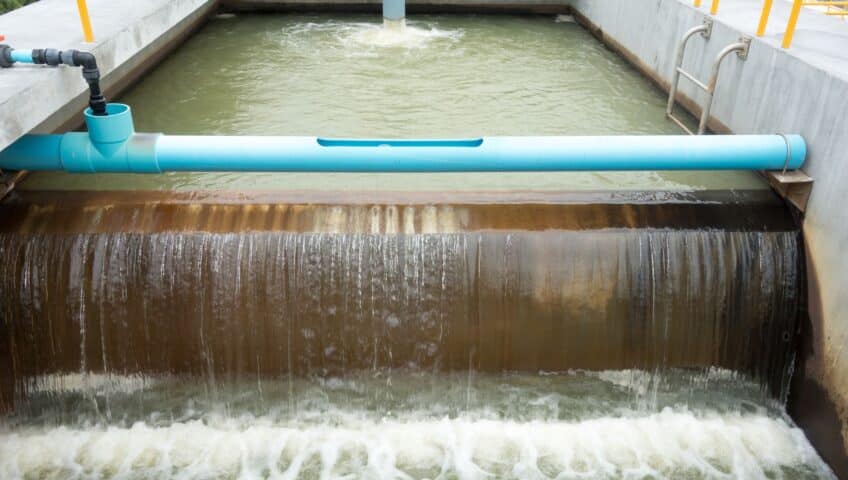Managing stormwater effectively is crucial for large strata complexes, especially in Mission, BC, where heavy rain can create significant challenges. Stormwater management refers to controlling and using rainwater efficiently to reduce the impact on our environment and infrastructure. Without proper systems in place, stormwater can cause flooding, erosion, and degrade water quality.
Large strata complexes face unique challenges because of their size and the volume of people they accommodate. Proper stormwater management ensures that the property remains safe, and reduces potential damage to buildings and landscapes. It also stabilises the surrounding environment by preventing soil erosion and water pollution.
Proactive stormwater management involves planning and maintaining systems that control and direct water flow effectively. By understanding the specific needs of your complex and implementing targeted solutions, we can manage stormwater effectively. In this article, we will explore the best practices for proactive stormwater management, focusing on the essential components, preventive measures, and the benefits of a well-implemented system.
Understanding Stormwater Management Needs
Understanding the specific stormwater management needs of a large strata complex is the first step towards effective management. In Mission, BC, heavy rainfall can create unique challenges. The large paved areas, such as parking lots and walkways, increase runoff, which can overwhelm natural absorption capacities.
A detailed site assessment is crucial. This involves analysing the layout, soil type, slope, and existing drainage systems. Understanding the flow of water through and around the complex helps us design systems that efficiently handle stormwater. This proactive approach identifies potential problem areas, such as low-lying regions prone to flooding.
Recognising the environmental impact is also key. Improper management can lead to polluted runoff entering local water bodies, affecting both wildlife and water quality. We mitigate these consequences and protect the local environment by implementing thoughtful stormwater strategies.
Key Components of an Effective Stormwater Management System
An effective stormwater management system comprises several key components. These elements work together to control, direct, and treat stormwater efficiently.
1. Catch Basins and Drains: These structures collect runoff from surfaces like roofs, streets, and parking lots. They prevent water from pooling and causing damage or flooding.
2. Underground Retention Systems: These systems store excess stormwater temporarily. By holding water during heavy rains, they prevent immediate overload of the drainage systems and release water slowly into the environment.
3. Permeable Surfaces: Using permeable materials for pavements and walkways allows water to seep through, reducing runoff and increasing groundwater recharge.
4. Detention Ponds: These ponds store stormwater and release it at a controlled rate. They help manage large volumes of water and reduce peak flow into drainage systems.
5. Green Infrastructure: Incorporating elements like rain gardens, green roofs, and bioswales not only manage stormwater but also enhance the aesthetics of the complex. These features allow stormwater to be absorbed naturally, reducing runoff and filtering pollutants.
Ensuring these components are correctly designed, installed, and maintained is essential for effective stormwater management. By integrating multiple techniques and technologies, we can address the various needs of large strata complexes.
Preventive Measures to Avoid Common Issues
Preventive measures are essential in stormwater management to avoid common issues like flooding and water pollution. Regular maintenance and inspections play a significant role in keeping systems functional. It is important to schedule routine checks to ensure drains and catch basins are clear of debris and functioning as intended.
1. Regular Inspections: Conducting regular inspections helps identify and address potential problems early. Look for signs of blockages, cracks, or leaks in the drainage system.
2. Debris Removal: Ensuring that gutters, drains, and catch basins are free from leaves, rubbish, and other debris is crucial. Blocked drains can lead to overflow and flooding.
3. Vegetation Management: Keeping grass and other vegetation trimmed helps prevent blockages and maintains unobstructed water flow. Ensure that tree roots are not damaging underground systems.
4. Sediment Control: Using sediment traps in areas prone to erosion can prevent sediment from clogging the drainage system. Regularly clean these traps to maintain their effectiveness.
5. Proper Disposal: Ensure that household and chemical wastes are disposed of properly and do not enter the stormwater system. Pollutants can contaminate local water bodies and harm the environment.
By implementing these preventive measures, we can maintain the efficiency of stormwater management systems and avoid costly repairs.
Benefits of Implementing Proactive Stormwater Management
Proactive stormwater management offers numerous benefits for large strata complexes. It not only protects the property but also enhances the overall quality of life for residents. One of the main advantages is reduced flooding. Effective systems control water flow, preventing puddling and overflow during heavy rains.
Another benefit is improved water quality. By filtering and managing runoff, we reduce the amount of pollutants entering local waterways. This protects the environment and ensures cleaner water resources for the community.
Additionally, proactive management helps in compliance with local regulations. Meeting these requirements avoids potential fines and legal issues. By addressing stormwater management proactively, we also enhance the property’s aesthetics with green infrastructure elements such as rain gardens and green roofs.
Lastly, proper stormwater management extends the lifespan of the infrastructure. Less stress on drainage systems means fewer repairs and replacements are needed over time. This leads to cost savings and a more sustainable living environment.
Conclusion
Stormwater management is a critical aspect of maintaining large strata complexes, especially in areas like Mission, BC, where heavy rainfall is common. Understanding the specific needs of your complex, integrating key components, and taking preventive measures all contribute to a successful system. These practices not only protect your property from flooding and damage but also benefit the environment and improve residents’ quality of life.
Implementing proactive stormwater management ensures the long-term sustainability and functionality of your infrastructure. At New Wave Earth Works, we specialise in creating efficient and reliable stormwater and sanitary systems tailored to your needs. Contact us today to learn more about how we can help you protect and enhance your property.


